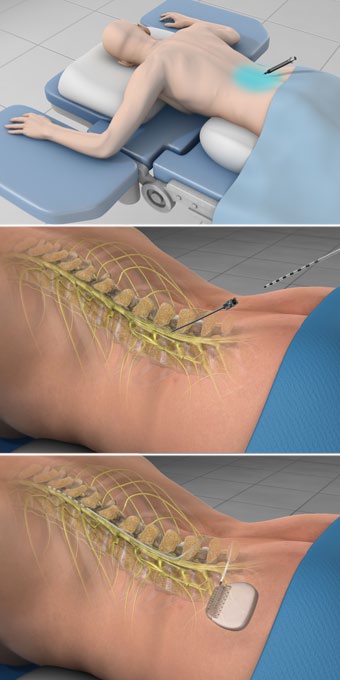

- #Spine stimulator how to#
- #Spine stimulator generator#
- #Spine stimulator full#
- #Spine stimulator trial#
You’ll enter an interspace, perhaps somewhere around the low thoracic or high lumbar area. Also, exact position might be determined by feedback from the patient during the procedure (details below)
#Spine stimulator trial#
During the 1 week trial phase blood thinners remain held.Ĭore Skills: See our guides to obtain images of the cervical, thoracic, or lumbar spine.
#Spine stimulator how to#

#Spine stimulator generator#
The implantable pulse generator (IPG) battery fits under your skin, usually on your buttocks or abdomen. Zaky removes the temporary leads and inserts permanent ones, carefully ensuring they're in the same position. Spinal cord stimulator implantation requires IV sedation or sometimes a general anesthetic. What does permanent spinal cord stimulator implantation involve?
#Spine stimulator full#
If you felt sufficient benefit from the trial, you can proceed with full implantation. Zaky discuss the effectiveness of spinal cord stimulation on your pain. The leads connect to the external stimulator that you use for about a week to assess how well spinal cord stimulation works for you. For optimal placement, he asks you to tell him when you feel the most significant reduction in pain as he moves the electrodes around. Zaky needs your feedback during the procedure. The electrodes on the ends of the leads must be in the right place to affect your nerves, so Dr. Zaky anesthetizes your back, then inserts the wire leads using an epidural needle or by making a small incision into the epidural space that surrounds your spinal cord. What does a spinal cord stimulator trial involve?Ī spinal cord stimulator trial involves having a minor surgical procedure to insert the electrodes in your spine. Before full implantation, you have a trial with an external generator to ensure the treatment can offer you sufficient pain relief.

Spinal cord stimulator implantation requires minimally invasive surgery, so it's typically used for the most severe, treatment-resistant forms of back and neck pain. This form of treatment involves having electrodes and a small generator implanted in your body that you control with a remote device. The electrical impulses a spinal cord stimulator produces disrupt the communication between the nerve endings in your back and neck and your brain. It uses electrical impulses to relieve spinal pain and pain affecting your arms and legs. A spinal cord stimulator is a device that can help patients with severe chronic pain that isn't responding to other therapies.


 0 kommentar(er)
0 kommentar(er)
